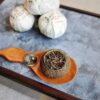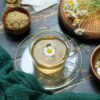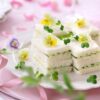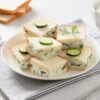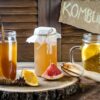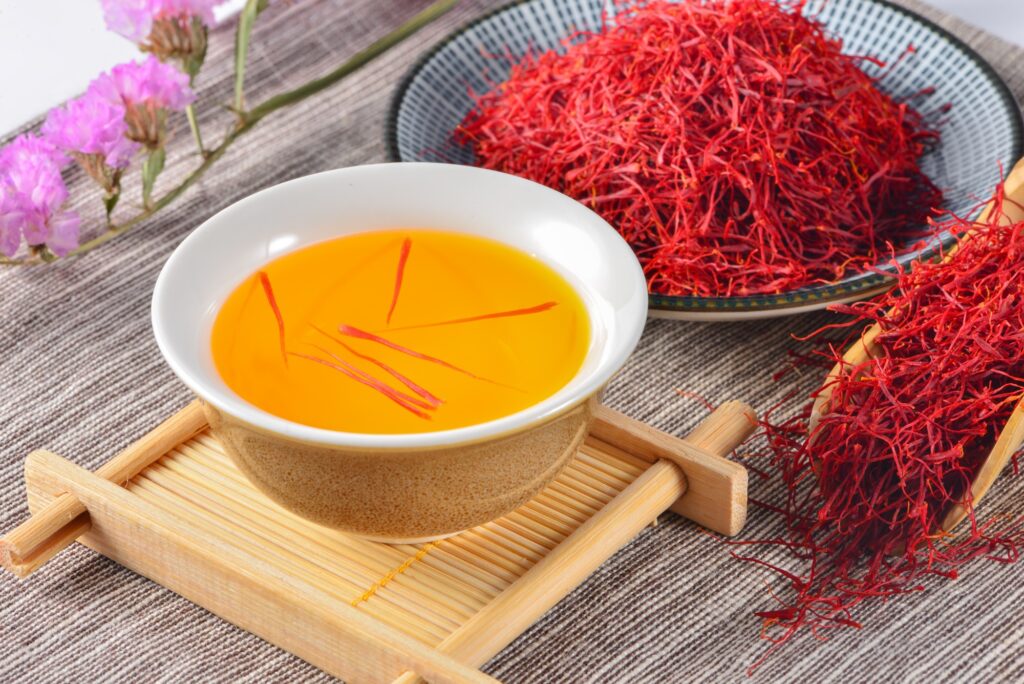
Welcome to the world of saffron tea, where ancient traditions and captivating flavors merge in a golden elixir.
Known as the “golden spice,” saffron has been treasured for centuries for its delicate aroma, vibrant color, and therapeutic properties. With its distinct flavor profile, saffron adds a touch of luxury to any cup of tea.
Benefits of Saffron Tea
Saffron, often referred to as the “golden spice,” is not only known for its vibrant color and delicate aroma but also for its numerous health benefits. Saffron contains a compound called crocin, which gives it its distinct golden hue and is believed to have antioxidant properties. These antioxidants help protect the body against oxidative stress and may contribute to overall well-being.
Additionally, saffron is known for its potential mood-enhancing properties. Studies have suggested that saffron may help alleviate symptoms of depression and anxiety, making it a soothing and uplifting beverage to enjoy.
Saffron tea is also believed to have anti-inflammatory properties, which can aid in reducing inflammation and promoting a healthy immune system. Furthermore, saffron has been traditionally used to improve digestion and promote good sleep.
The History and Cultural Significance of Saffron Tea
Saffron has a rich history that spans centuries and is deeply rooted in various cultures around the world. Originally grown in the Mediterranean region, saffron quickly spread to different parts of the globe, becoming an essential ingredient in many traditional dishes and beverages.
In ancient Persia, saffron was highly valued for its culinary and medicinal properties. It was considered a luxury spice and often used to prepare royal dishes and beverages. Saffron tea, in particular, was enjoyed for its exquisite flavor and believed to promote vitality and well-being.
Saffron also holds significance in Indian culture, where it is used in religious ceremonies, festivals, and traditional Ayurvedic medicine. The distinct aroma and vibrant color of saffron make it a symbol of purity, prosperity, and good fortune.
Choosing the Right Saffron for Your Tea
When it comes to making saffron tea, selecting the right saffron is crucial to achieving the perfect flavor and color. Here are some key points to consider when choosing saffron for your tea:
- Look for high-quality saffron strands: The quality of saffron can vary significantly, so it’s important to choose saffron strands that are bright red and have a strong aroma. Avoid saffron that appears dull or has a musty smell, as these may indicate lower quality.
- Check for purity: Pure saffron is derived from the stigma of the Crocus sativus flower and should not contain any additional ingredients or fillers. Look for saffron that is labeled as “pure” or “100% saffron” to ensure you’re getting the real deal.
- Consider the origin: Saffron is grown in various regions around the world, including Iran, Spain, and Kashmir. Each region has its own unique flavor profile, so you may want to experiment with different origins to find the one that suits your taste preferences.
Once you have chosen the perfect saffron for your tea, it’s time to learn how to properly brew it.
How to Properly Brew Saffron Tea
Brewing saffron tea is a delicate process that requires precision and patience. Follow these steps to ensure you achieve the perfect cup of saffron-infused goodness:
- Measure the saffron: Depending on how strong you want your tea to be, you’ll need to measure the saffron carefully. A general guideline is to use around 5-7 strands of saffron per cup of tea. Adjust the amount to your taste preferences.
- Crush the saffron strands: To release the full flavor and aroma of saffron, gently crush the strands using a mortar and pestle or your fingers. This will help the saffron infuse more effectively in the tea.
- Warm the water: Heat the water to just below boiling point. Pour the hot water into a teapot or cup, depending on your preference.
- Add the saffron: Place the crushed saffron strands into the teapot or cup with the hot water. Allow the saffron to steep for at least 10 minutes, or longer if you prefer a stronger flavor.
- Strain and serve: Once the saffron has steeped, strain the tea to remove any leftover saffron strands. Pour the tea into cups and serve it hot.
Remember, brewing saffron tea is an art that requires practice, so don’t be discouraged if your first attempt is not perfect. With time, you’ll develop a knack for creating the ideal cup of saffron tea.
Enhancing the Flavor of Saffron Tea with Additional Ingredients
While saffron tea on its own is a delightful beverage, you can further enhance its flavor by adding complementary ingredients. Here are a few suggestions to elevate your saffron tea experience:
- Honey: Add a drizzle of honey to your saffron tea for a touch of natural sweetness. Honey not only enhances the flavor but also provides additional health benefits, such as soothing a sore throat or boosting your immune system.
- Citrus fruits: Squeeze a few drops of lemon or orange juice into your saffron tea to brighten its flavor. The citrusy notes complement the floral and earthy undertones of saffron, creating a harmonious blend of flavors.
- Cardamom: For a Middle Eastern twist, add a pinch of ground cardamom to your saffron tea. This spice adds a warm and aromatic element to the tea, making it even more enticing.
Feel free to experiment with different ingredients and find your own unique combination. The versatility of saffron tea allows for endless possibilities, catering to various taste preferences.
Health Benefits of Saffron Tea
Apart from its enticing flavor, saffron tea offers a range of health benefits. Here are some of the key advantages associated with consuming saffron tea:
- Antidepressant properties: Saffron has been studied for its potential mood-enhancing effects. It may help alleviate symptoms of depression and anxiety, promoting a sense of calm and well-being.
- Anti-inflammatory properties: Saffron contains compounds that possess anti-inflammatory properties, which can aid in reducing inflammation in the body. This may be beneficial for individuals with conditions such as arthritis or inflammatory bowel disease.
- Digestive aid: Saffron has traditionally been used to improve digestion and relieve digestive discomfort. It may help soothe the stomach and promote healthy digestion.
- Sleep aid: Saffron tea is often consumed before bedtime to promote relaxation and improve sleep quality. Its calming properties can help ease the mind and prepare the body for restful sleep.
Remember, while saffron tea offers potential health benefits, it is important to consume it in moderation and consult with a healthcare professional if you have any underlying health conditions.
Using Saffron Tea as a Natural Remedy
In addition to being a delightful beverage, saffron tea can also be used as a natural remedy for various ailments. Here are a few ways you can incorporate saffron tea into your wellness routine:
- Sore throat relief: Saffron tea, when combined with honey and a squeeze of lemon, can help soothe a sore throat. The antibacterial properties of saffron, coupled with the soothing effects of honey, provide relief and comfort.
- Skin health: Applying saffron tea topically may help improve the appearance of the skin. Saffron is known for its antioxidant properties, which can help combat free radicals and promote a healthy complexion.
- Menstrual cramp relief: Saffron tea has been used traditionally to alleviate menstrual cramps. The anti-inflammatory properties of saffron may help reduce pain and discomfort during menstruation.
Remember to use saffron tea as a complementary remedy and consult with a healthcare professional for any specific health concerns.
Saffron Tea Recipes and Variations
Now that you’ve mastered the art of brewing saffron tea, it’s time to explore different recipes and variations. Here are a few ideas to get you started:
- Saffron Chai: Add saffron strands to your favorite chai tea recipe for a unique twist. The combination of spices in chai, such as cinnamon and cardamom, pairs exceptionally well with saffron, creating a comforting and aromatic beverage.
- Saffron Milk Tea: Infuse saffron strands into warm milk, along with your choice of tea leaves, to create a creamy and nourishing drink. This soothing concoction is perfect for a cozy evening or as a morning pick-me-up.
- Iced Saffron Tea: Brew saffron tea as usual, then allow it to cool. Serve it over ice with a splash of lemon or your preferred sweetener for a refreshing and invigorating summer beverage.
Feel free to experiment with these recipes and create your own unique variations. The versatility of saffron tea allows you to tailor it to your taste preferences and create a truly personalized tea experience.
Enjoying the Golden Goodness of Saffron Tea at Home
Saffron tea is not just a beverage; it’s an experience that transports you to the enchanting world of ancient traditions and captivating flavors. By following our step-by-step guide, you can now embark on this tea journey and create the perfect cup of saffron tea in the comfort of your own home.
Remember to choose high-quality saffron, brew it with care, and experiment with additional ingredients to elevate the flavor. Whether you’re seeking its health benefits, exploring its cultural significance, or simply indulging in its exquisite taste, saffron tea is sure to captivate your senses and nourish your soul.
So, gather your saffron strands, warm up the water, and let the golden brew unfold its magic. Cheers to the perfect cup of saffron tea!

